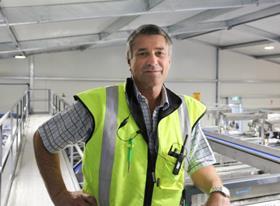
Hortinvest hopes unprecedented demand for premium New Zealand cherries will attract more financial backers to the sector.
The company is seeking investors for two 80ha cherry orchard projects in the premier Central Otago production region.
The move coincideswith a steep rise in New Zealand cherry exports, which have quadrupled over the past four years to reach 4,000 tonnes during the 2017/2018 season. The Central Otago region produces around 90 per cent of the country’s export crop.
'New Zealand's cherry industry has demonstrated strong long-term growth, driven by New Zealand's key competitive advantages such as the ideal climate and conditions, proximity to, and free trade agreements with Asia,' Hortinvest’s project and orchard development manager, Ross Kirk, said.
A specialist horticultural investment company set up in 2016, Hortinvest has been the driving force behind the establishment of the Pure Pac operation in Cromwell, a consortium of seven New Zealand cherry growersmarketing fruit under the Pure Gold and Gold Reserve brands.
For its two new developments, Hortinvest is offering long-term contracts (seven–ten years), with a minimum investment of NZ$750,000 spread over four years.
'It costs between NZ$150,000 and NZ$200,000 per hectare based on a 40–80ha block, so there are obvious economies of scale,” Kirk said. “Investors can expect production to start three years after planting, with yield peaking at 18-20 tonnes per hectare as the trees mature.
'Hortinvest offers a fully integrated grower-packer-shipper model. We source land, establish and manage orchards and packhouses, and market and export premium cherries to maximise returns to investors.”
With peak industry body Summerfruit New Zealand predicting 40 per cent growth in the dollar value of New Zealand cherry exports over the next 20 years, Kirk said the opportunity represents the possibility of a strong return on investment.
The forecast is supported by the findings of the Coriolis Report – released by the New Zealand Government – which investigated emerging growth opportunities in the cherry industry. It found the Southern Hemisphere was responsible for only 5 per cent of global cherry production, yet generated 49 per cent of global value.
“As a Southern Hemisphere cherry producer, the New Zealand industry is not competing with produce from the Northern Hemisphere,” Kirk added. “Therefore, our harvest from December to February is uniquely positioned to supply Asia (driven by the Chinese New Year appetite), Europe, the US and the Middle East.
'Chile is the biggest competitor at our time of year, producing fruit from November to January. However, Chile focuses on sea freight with produce taking up to 45 days to arrive. Our produce is shipped by air and arrives fresh within days. Buyers know the difference and are willing to pay a premium.'






No comments yet